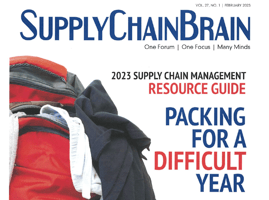The COVID-19 pandemic has produced and will continue to produce artificial demand and supply...
Respond, Recover, Renew: Companies Weather Covid's Latest Wave
In March 2020, the Institute of Risk Management (IRM) provided a host of research depicting the early impacts of COVID-19 on companies around the globe. Some of those impacts in order of severity were rapid changes in work; project delays; hiring delays; loss of sales, revenue and orders; supplier issues; and staff absences. With this data from IRM and other research organizations, a body of 30 companies called The Supply Chain Risk Management Consortium projected an impending “bullwhip effect” caused by distorted information flowing up and down supply chains — leading to an imbalance between demand and supply.
From there, the Consortium predicted a global “W-like” recovery, which included three phases: respond, recover and renew.
In the initial “respond” phase, the bullwhip effect impacted all industry sectors, especially healthcare. They had an over demand and under supply of personal protective equipment, or PPE. Many companies in other sectors were forced to cut their product portfolios and re-scale their supply chains.
About 75% of companies say they’re now in the “recover” stage, according to the Consortium, although the bullwhip effect has had an uneven impact on multiple sectors. In this phase, companies have been reducing their portfolios, entering new market channels and reinventing their product portfolios. In the “renew” phase, we’ll see successful companies continue to pivot and rescale their supply chains.
The challenges will be many. Amid the omicron wave, companies are focused on:
- Ensuring the safety of staff,
- Maintaining close communication with partners,
- Developing crisis management teams,
- Improving supply chain visibility,
- Allocating resources, and
- Making business decisions based on risk-reward and cost-benefit
Going forward, consider these action items:
- Improve your supply chain visibility upstream to your suppliers and downstream to your customers.
- Identify risks, and begin to assess them using quantitative methods.
- Build a digital twin model of your supply chain.
- Run “what-if” scenarios to witness how your supply chain will react to risk stimuli.
- Prepare response plans for your largest potential risks.
Gregory L. Schlegel is founder of The Supply Chain Risk Management Consortium and former executive in residence, Supply Chain Risk Management at Lehigh University.

